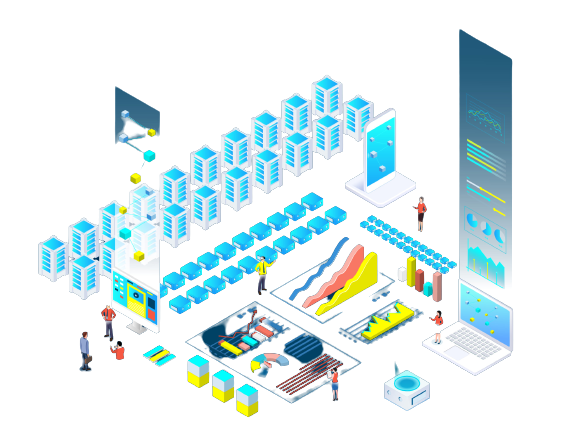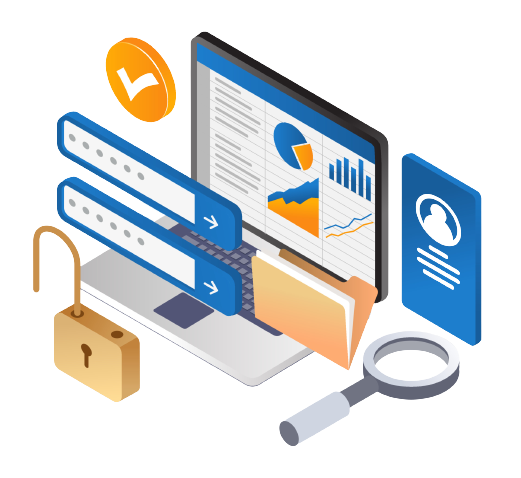
The blockchain holds immense amounts of data that can provide invaluable insights into crypto markets, projects, trends and more. However, this data is complex, fragmented and difficult to analyze for most people.
This is where Dune Analytics comes in.
Dune is a powerful data analytics platform that allows anyone to easily query, extract and visualize blockchain data to gain actionable insights. It has become an essential tool for crypto analysts, investors, traders and enthusiasts seeking an information edge.
- What is Dune Analytics and how does it work?
- Key features and capabilities
- Using Dune for crypto research and analysis
- Creating custom queries and dashboards
- Dune use cases and examples
- Limitations of the platform
- The team behind Dune
- Competitors and Alternatives to Dune
The Future of Dune Analytics
In this comprehensive guide, we’ll cover everything you need to know about Dune Analytics including:
Let’s dive in and explore how this platform is transforming blockchain data analysis.
What is Dune Analytics?
Dune Analytics is an open-source platform that allows anyone to query, analyze and visualize blockchain data from various networks. It was founded in 2018 by Fredrik Haga and Mats Olsen and has become one of the most widely used blockchain data analytics tools.
In simple terms, Dune acts as an interface between users and on-chain data. It connects to node providers and indexes blockchain data into its own SQL database. Users can then write SQL queries to extract the specific data they need and create visualizations like charts and graphs.
These custom queries and visualizations can be published as interactive dashboards for other users to access or keep private. The platform covers major blockchains like Ethereum, BNB Chain, Polygon, Avalanche, Optimism and Arbitrum, along with 1000s of applications built on these chains.
Dune dashboards provide insights into topics like DEX analytics, whale activity, and NFT traits, DeFi protocol usage and more. Anyone can use the platform for free without an account, but registering allows you to create custom queries and dashboards.
So in summary, Dune ingests blockchain data, allows users to extract value via SQL queries, and enables easy sharing of that data via dashboards. The result is a simplified blockchain analysis accessible to a wider audience.
How Does Dune Analytics Work?
Let’s look at how Dune can turn raw blockchain data into meaningful insights:

Sourcing On-Chain Data
Dune sources on-chain data by connecting to archive/full nodes of supported blockchains. These nodes store the full transaction history and state of their respective blockchains. Dune also uses 3rd party data providers for off-chain and derivative data.
It currently connects to nodes for 10+ networks including Ethereum, BNB Chain, Polygon and more. New blockchain integrations are added based on community requests.
Transforming Data into an SQL Database
Once node data is obtained, Dune transforms and stores it in an SQL database. This includes decoding contract ABI data into human-readable formats. Having data in SQL format allows users to query it using a familiar language.
Both raw and decoded data tables are available. Dune has decoded 1000s of popular smart contracts into easy-to-understand terminology. Users can also submit requests to decode new contracts.
Querying Data with SQL
With data structured in SQL format, users can write queries to extract the exact data points they need. No prior SQL knowledge is required as Dune provides query templates and an SQL editor with autocomplete.
But SQL does provide immense flexibility for power users. You can join data across multiple tables, calculate metrics, filter, group, sort and more using SQL syntax.
Visualizing and Sharing Insights
Query results can be visualized using Dune’s built-in charting options. Visualizations help better interpret data and spot trends. Users can then share these charts and the underlying query as interactive dashboards.
Dashboards can be made public for anyone to access or kept private. Public dashboards essentially act as an API for blockchain data that others can build on top of.
This flexible querying and visualization makes Dune extremely powerful for on-chain research and analysis.
Key Features and Capabilities
- SQL access to on-chain data – Dune structures blockchain data into SQL format and provides an editor to write queries with auto-complete. This makes querying data easy without complex blockchain APIs.
- 10+ blockchains and 1000s of apps – Dune supports major smart contract platforms like Ethereum, BNB Chain, Polygon etc. plus 1000s of applications across DeFi, NFTs, DAOs and more.
- Customizable dashboards – Interactive dashboards with charts and metrics can be created from query results and shared publicly or privately.
- Collaboration tools – Teams allow collaborative analysis with shared dashboards. Comments and forking empower community learning.
- Flexible pricing – Anyone can use Dune for free. Paid plans add priority support, private dashboards, more queries and other benefits.
- Developer resources – Extensive docs, query templates, events and Discord channel provide resources for developers to leverage Dune.
- Mobile access – The Dune mobile app allows accessing dashboards and queries on the go for tracking data anywhere.
Now let’s explore some of the key features that enable Dune to transform blockchain data into actionable insights:
These capabilities combine to make Dune a powerful yet flexible platform suited for varied blockchain analysis needs. Both beginners and experts can uncover on-chain insights.
Using Dune for Crypto Research and Analysis
Now that we’ve covered the basics, let’s look at how Dune can be used for crypto, DeFi and NFT research and analysis. Some examples:
On-chain Analytics
Analyze activity across DeFi protocols like Uniswap or MakerDAO.
Track adoption of blockchain platforms like price feeds or transactions.
Identify concentration risk across protocols and applications.
Monitor supply and demand trends for cryptoassets.
Trading Analytics
Backtest trading strategies using historical on-chain data.
Build models to detect anomalies and opportunities in markets.
Analyze activity of whales, arbitrage bots, DEXs etc.
Gauge market sentiment and on-chain momentum.
NFT Analytics
Analyze sales volumes and pricing across NFT collections.
Track traits like rarity and utility to identify valuable NFTs.
Identify rising collections and monitor investor behavior.
Research historical ownership patterns and liquidity.
Token Analytics
Analyze token supply distribution and flows between entities.
Track adoption metrics like daily active addresses and transactions.
Monitor social sentiment and its correlation with price patterns.
These demonstrate just some of the many potential use cases. Dune is highly flexible for analyzing any on-chain trends and building models using real blockchain data.
Creating Custom Queries and Dashboards
One of Dune’s biggest strengths is enabling users to create customized queries and dashboards tailored to their research needs.
Here’s an overview of the process:
Step 1 – Identify the Data Needed
First, determine the exact data points required to answer your question. For example, for analyzing NFT sales you would need collection, sale price, sale date, buyer and seller.
Step 2 – Find Data Tables
Browse Dune’s existing data tables to locate the tables containing the fields you need. You can search tables by blockchain, topic, table name etc.
For NFT sales, you would find tables like opensea_events_nft_contract and opensea_events_account.
Step 3 – Write a SQL Query
With target tables identified, write an SQL query to extract the desired data points. Join tables, filters, groups, aggregate etc. as needed.
For NFT sales, you would select the sale price, date, buyer and seller from the two tables using the asset contract ID to join them.
Step 4 – Visualize and Publish
Use Dune’s charting options like bar charts, line charts and sunbursts to visualize the query results. Give the dashboard a title and description then publish to share your analysis.
For NFTs, column or bar charts showing sales over time by collection would provide insights. Add any other relevant charts and metrics.
Following these steps allows you to extract specific insights tailored to your needs. Dune’s query editor and templates help smooth out the learning curve for writing SQL.
Dune Use Cases and Example Dashboards
To further illustrate potential use cases, let’s look at some real-world examples of popular Dune dashboards:
DeFi Protocol Analysis
This dashboard analyzes activity across multiple DeFi protocols by displaying metrics like total value locked, weekly active users and transaction fees. Great for gauging adoption and comparing protocols.
Ethereum Exchange Flows
Check out this dashboard tracking the inflow and outflow of tokens between exchanges and other entities on Ethereum. Useful for monitoring whale activity.
NFT Collection Analysis
Analyze NFT collections like Bored Ape Yacht Club by visualizing key metrics like sales, holders, floor price and more.
ERC20 Token Analysis
This query retrieves data on any ERC20 token like price, transfers, holders and other metrics. Flexible analysis of Ethereum tokens.
These are just a few examples showcasing the diversity of data analysis enabled by Dune. There are 100s of dashboards to explore on popular topics and you can create unlimited custom analysis.
Limitations of Dune Analytics
Only on-chain data – Dune provides no off-chain, market or social data. Combining Dune with other data sources provides a more complete picture.
Not real-time data – There can be a lag between when data is generated on-chain versus queried on Dune. Delays range from minutes to hours.
Learning curve – It takes time for new users to learn to write SQL queries. Querying also requires technical knowledge of blockchain data structure.
Only as accurate as the data – Quality of analysis depends on the quality/completeness of on-chain data indexed by Dune.
Freemium limits – Free users face query limits, slower refresh times, and lack of user support.
While Dune is an incredibly useful platform, it does have some limitations to keep in mind:
While powerful, Dune is best complemented with other datasets, used carefully for time-sensitive tasks, and paired with a learning plan as needed. Paying for access helps overcome some limits.
The Team Behind Dune Analytics
Dune was co-founded in 2018 by Fredrik Haga and Mats Olsen. Both founders have backgrounds in Ethereum as former core contributors to the project.
Haga and Olsen worked together at a Norwegian media company before deciding to create Dune. The initial idea was to build an internal tool for smart contract analysis.
After struggling initially with little funding, Dune was accepted into the Binance incubator program in 2019 which provided key early backing.
Since then, the team has grown significantly after raising over $100 million in venture capital. This has allowed Dune to expand its data coverage, product capabilities and user community.
Dune is based in Oslo, Norway where the 30+ person team is headquartered. The company also has staff distributed globally across Europe, the US and Latin America.
Competitors and Alternatives to Dune Analytics
Dune has certainly become one of the most widely used blockchain analytics platforms, but there are competitors emerging in this space:
Nansen – Offers on-chain, off-chain and financial data. More model/metric-focused than custom querying.
Glassnode – Specializes in Bitcoin/on-chain analytics. Metrics, charts and API access.
Blockchair – Block explorers like Blockchair allow querying blockchain data via API.
Flipside Crypto – Freemium crypto analytics via SQL querying like Dune. More limited data coverage.
On-chain Studies – Python notebook approach to blockchain analysis using hosted nodes.
Each platform has slightly different focus areas, pricing models, datasets, and formats for accessing data. Dune’s balance of flexibility, ease-of-use and breadth of data has fueled its appeal.
For small-scale analysis, block explorer APIs can be used directly as well. But they require handling raw data formatting.

The Future of Dune Analytics
Dune is in an exciting growth phase after establishing its market-leading position for blockchain analytics.
Areas of future development include:
Expanding data coverage across more blockchains, datasets and niche applications.
Growing integration capabilities to make Dune’s data available across more platforms.
Rolling out improved collaboration tools for teams to manage access and permissions.
Launching new paid features like alerts, workflow automation, and APIs.
Providing more educational resources for non-technical users to learn.
Exploring applications like fraud/risk monitoring, research publishing and data monetization.
Implementing integrations for traditional finance data to combine with on-chain analytics.
After democratizing access to blockchain insights, Dune’s evolution promises to unlock even greater value from Web3 data. The mission of empowering individuals to leverage on-chain analytics for informed decisions remains core.
Unlock Greater Value from Blockchain Data with Dune
This guide has just scratched the surface of how Dune is transforming the world of blockchain analysis.
With its powerful combination of flexible SQL querying, interactive visualization and a passionate community, Dune has created the definitive platform for extracting value from on-chain data.
Whether you’re an investor analyzing markets, a trader developing models, a DeFi user monitoring protocols, or an enthusiast exploring trends – Dune likely has data to support your needs.
Learning to become proficient at querying blockchain data with SQL does require some time investment. But doing so unlocks almost unlimited potential for customized analysis.
Dune brings transparency to previously opaque blockchain datasets. This enables more informed research, decision making and innovation across the decentralized economy.
The platform lowers barriers so anyone can leverage on-chain analytics. As adoption grows, expect new and unexpected use cases to emerge. Dune is ultimately empowering the builders, thinkers and creators driving Web3’s growth.